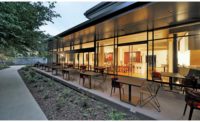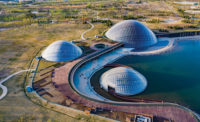Best Projects Small Project: Cincinnati Zoo & Botanical Garden Cat Canyon






The newly renovated Cincinnati Zoo & Botanical Garden Cat Canyon is the venue's seventh facility and first animal exhibit to receive LEED-Gold certification, furthering the zoo's quest to become the most sustainable facility of its kind in the U.S.
While refurbishing the canyon and associated Night Hunters Building, project team members reduced water usage for irrigation by 50%, diverted more than 90% of construction waste to recycling and introduced low-VOC adhesives, sealants, paints and carpeting into interior spaces.
Efforts extended to heating and cooling, with the building incorporating an energy-recovery system to precondition incoming air.
Project team members also darkened the lighting scheme in the building to enhance the visitor experience and added new emergency lighting to ensure the facility is lit sufficiently in the event of an emergency.
In all, plans called for expanding Cat Canyon and linking it to the Night Hunters experience in addition to erecting a new facility for snow leopards and a new watering hole for tigers.
To create new environments, team members specified gunite rockwork to simulate actual rock and specified foliage best reflecting the natural habitats of the zoo's white tigers, snow leopards and Malayan tigers.
Environments vary. One exhibit allows visitors to view Malayan tigers through glass just 1-in. thick, with a heated rock off a pool attracting the animals to the glass.
The white tiger exhibit includes a 20-ft-tall waterfall that pumps 500 gallons of water per minute into an 8-ft-dia pool.
The snow leopard exhibit has both open-air and glass viewing areas.
Logistics and weather, including the wettest spring on record, posed significant challenges during construction. Rain proved particularly detrimental to rock and concrete work. To expedite concrete pours, the project's contractor worked side by side with members of the exhibit department to ensure all criteria for patterning and color were met on the first attempt.






